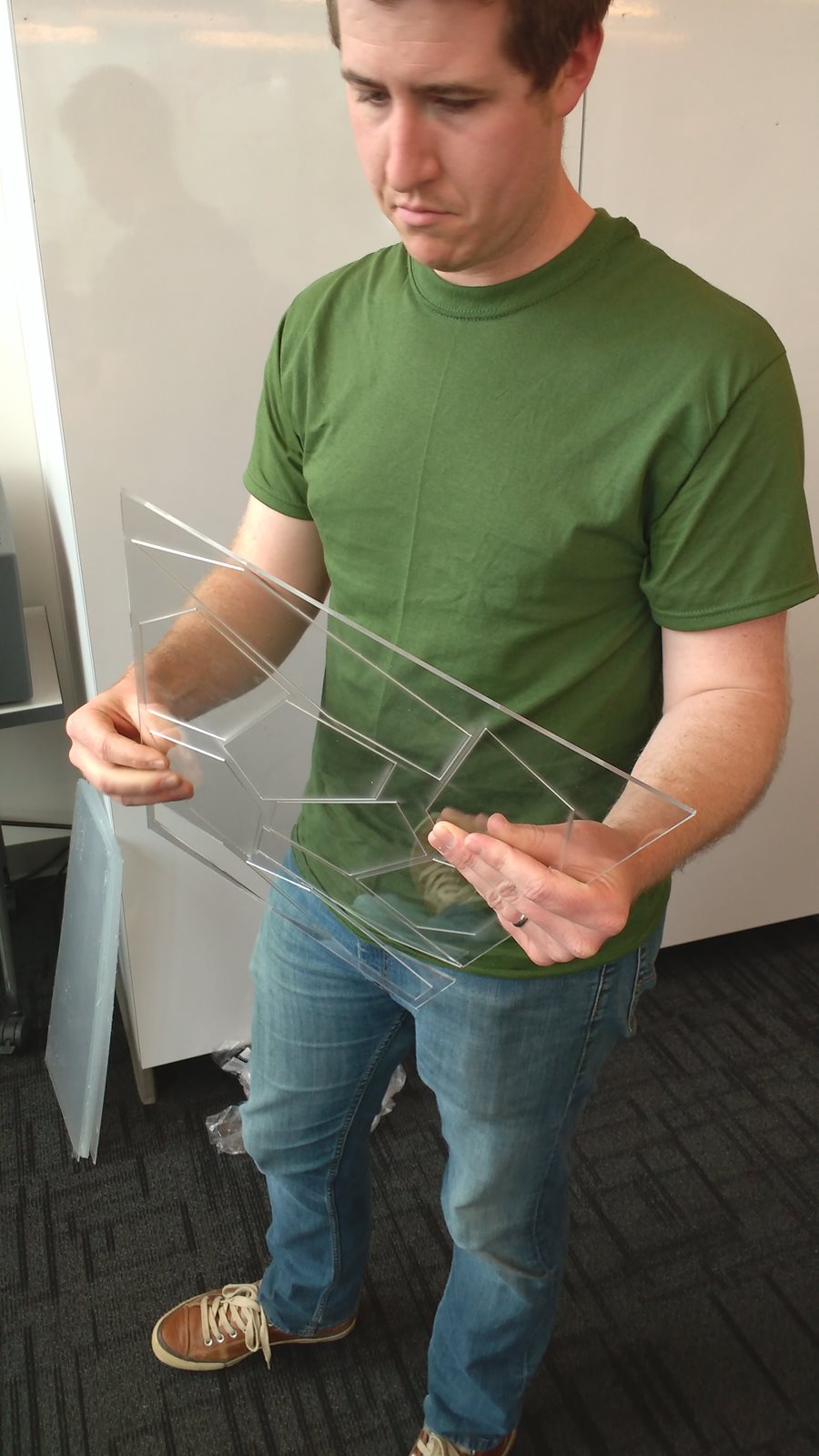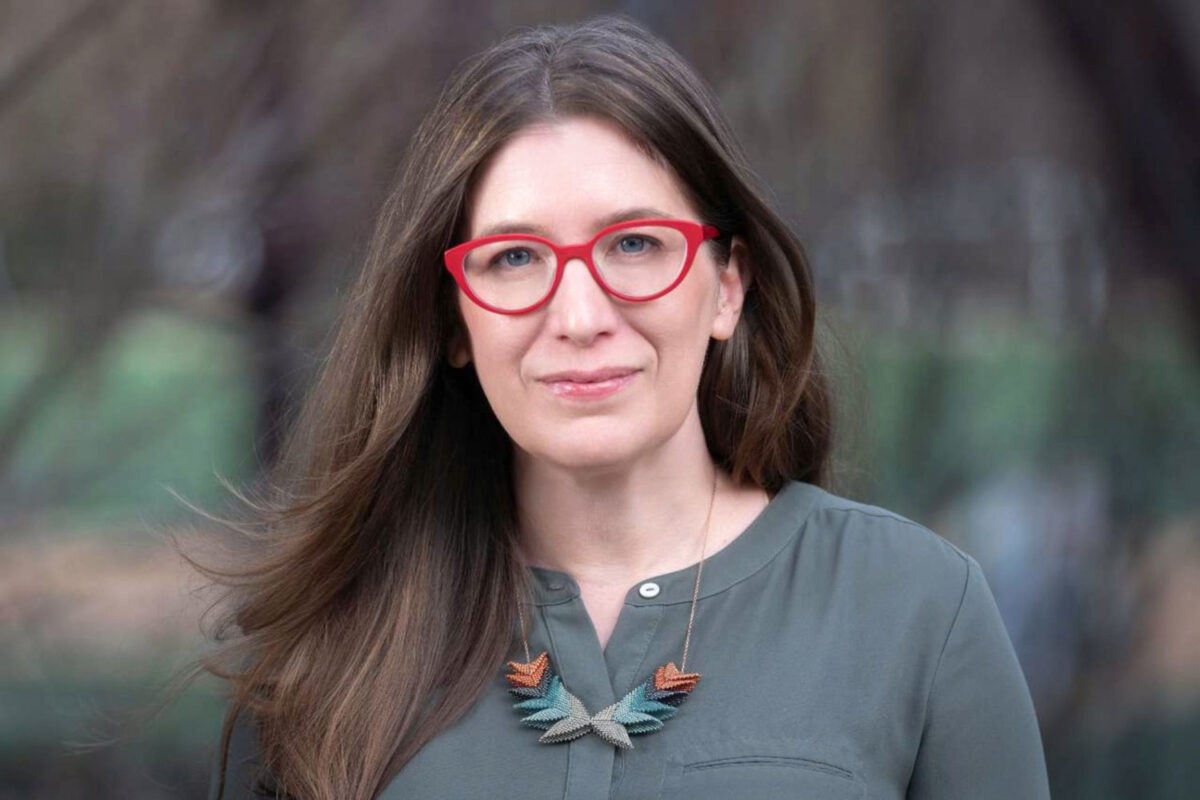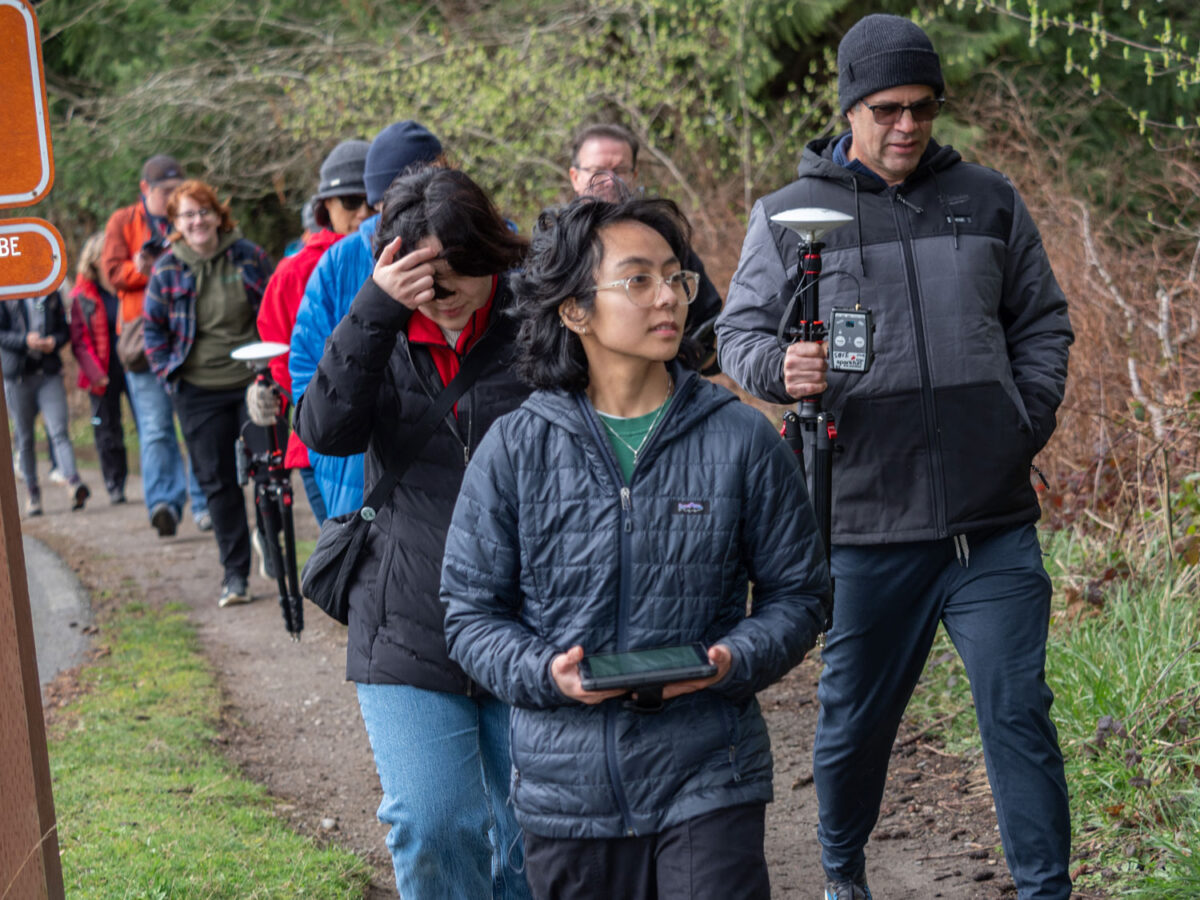
When artist Stephen Watson arrived at University of Washington Bothell to prepare an installation based on a layout of pentagons, he thought he’d have to cut the shapes out of Plexiglas by hand with a jigsaw.

He was pleased when mathematician Casey Mann showed him the laser cutter at Makerspace. With the laser cutting 200 or 300 hand-size pentagons from the sheets of plastic glass, Watson said he’ll expand the work of art he’s installing at the fourth floor vista of Discovery Hall — “more ambitious, more precise, more collaborative.”
Arranged in a 6-foot mosaic or mandala, individual tiles are covered with various herbs and spices to create a unique visual and aromatic experience.
Watson is an assistant professor of art at Samford University in Birmingham, Alabama, known for creating such temporary, sensory works of art.
He’ll decide in the moment how to spread around the curry, paprika, chilies, rosemary, sage, oregano, cinnamon, onion powder and maybe turmeric. He wasn’t sure about turmeric Tuesday as he broke out the pentagons from the lasered sheets of plastic glass.
Watson speaks of his art as a living thing that evolves as it is created to fit the space. He says he wants it to feel like it belongs.
The pentagon design recognizes the mathematical discovery last year by Mann, Jennifer McLoud-Mann and undergraduate researcher David Von Derau of the 15th way to interlock identically shaped pentagons.
The artwork is a way people can relate to the discovery in a nonmathematical way, says Mann, associate professor in the School of STEM Engineering and Mathematics Division.

Watson plans to finish “spicing” in time for a School of STEM student mixer from 3 p.m. to 5 p.m. Thursday at the Discovery Hall fourth floor vista where he’ll give a talk about the intersection of mathematics and visual art.



